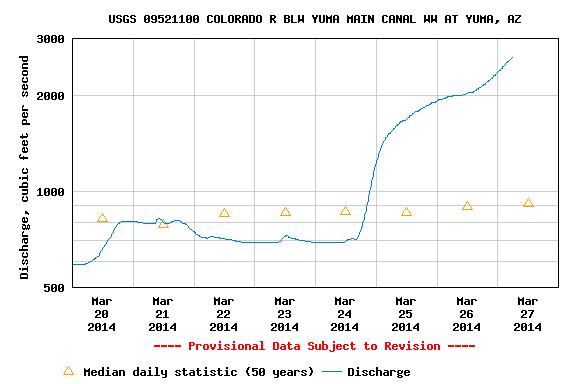The water outside the window of my Yuma, Ariz., hotel, has been rising since Monday. The Bureau of Reclamation likes to keep it below 3,000 cubic feet per second here so it doesn’t disturb the lovely park the folks of Yuma built here over the last decade. But sometimes its hard.
There’s an irony to how the plumbing is being operated to create the environmental pulse flow I’ve been covering this week. Water for the pulse is released from Hoover Dam, with about three days’ travel time to get here. But on the U.S. side, it doesn’t travel directly in the riverbed the whole way. Instead, the Bureau of Reclamation diverts the water at Imperial Dam, 30 miles upstream, into the Imperial Canal.
There’s a point by over by Pilot Nob, the point at which the All-American Canal and the old river are quite close, where the Bureau and the Imperial Irrigation District can drop water back down out of the Canal and into the river. Much of the water for the pulse flow is being moved that way, though at this time of year, with Imperial farmers doing crop rotations and ordering extra water, there’s not enough capacity to move all the pulse flow water that way. So now, some of it is actually flowing down the river channel, past my hotel – a river all the way from the snowpacks of the Rockies in a riverbed the entire way to – well, some folks hope, all the way to the Sea of Cortez.
A reminder that this river, even when we’re trying to make it more river-like, is fundamentally plumbing.


